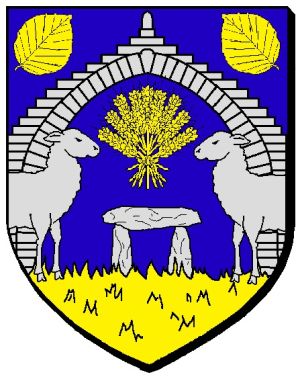La Tieule: Difference between revisions
Jump to navigation
Jump to search
Knorrepoes (talk | contribs) m (Text replacement - "{{fr}}" to "") |
Knorrepoes (talk | contribs) m (Text replacement - "|'''English''' ↵| {{blazon wanted}}↵" to "|'''English''' | blazon wanted ") |
||
| Line 14: | Line 14: | ||
|- | |- | ||
|'''English''' | |'''English''' | ||
| | | blazon wanted | ||
|} | |} | ||
Revision as of 12:09, 7 April 2023
LA TIEULE
Département : Lozère
| French | D'azur à la voûte caussenarde en lauze d'argent, accompagnée aux cantons du chef de deux feuilles de hêtre d'or, posées en barre à dextre et en bande à senestre et, en pointe, d'un dolmen d'argent, surmonté d'une gerbe de blé de neuf épis d'or et accosté de deux brebis arrêtées et affrontées d'argent, mouvant à demi des flancs de l'écu et brochant sur la voûte; le tout posé sur une plaine herbée d'or. |
| English | blazon wanted |
Origin/meaning
The arms were officially adopted in February 2012.
The sheep, the grassy plain and the sheaf of wheat evoke the agricultural character of the municipality. The sheaf of wheat is made up of nine ears of corn for each of the inhabited places: La Tieule, Le Lebous, Longviala, Pertuzades, Le Duc, Malavilette, La Falgette, Lou-Claouzet and La Foulguière.
The dolmen indicates the presence of one in Lebous. The blue field is taken from the arms of the Lord of Canilhac. The vault, typically Caussenarde, recalls the name of the village (La tuile).
The two beech leaves symbolize the woods.
Literature: Image from http://www.armorialdefrance.fr
